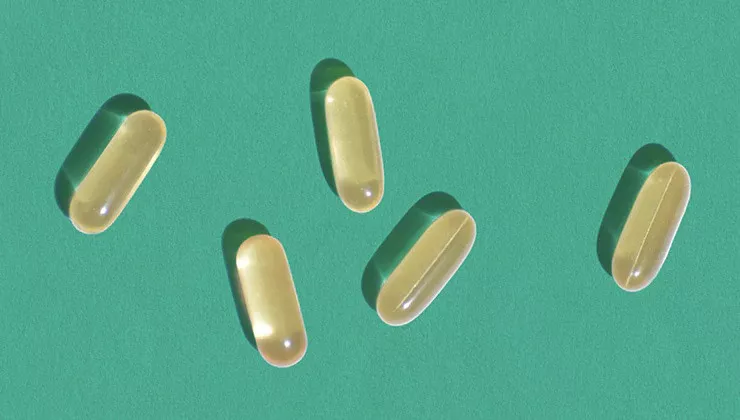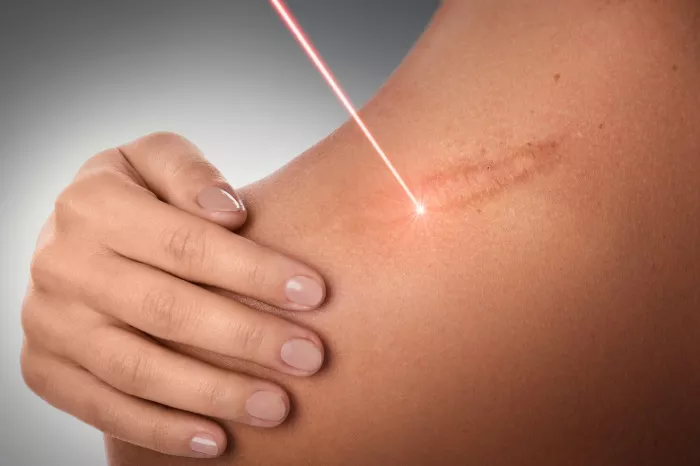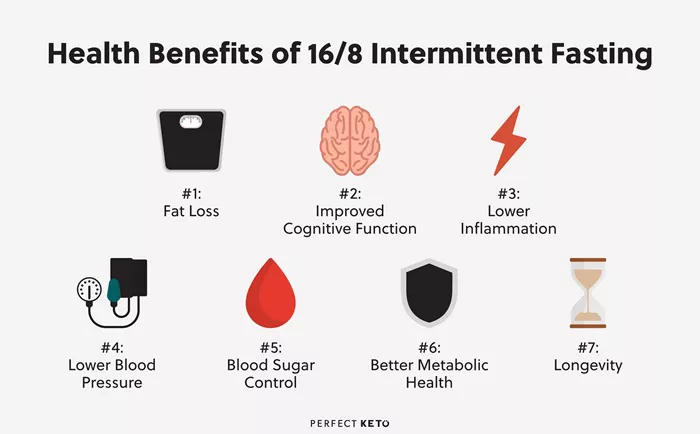Skin lightening has become a popular concern for many individuals who desire a more even skin tone or to address specific skin discoloration issues. However, it is essential to approach skin lightening with caution and a proper understanding of the available products and their mechanisms. In this comprehensive article, we will explore various products that can be used to lighten the skin, their active ingredients, how they work, potential benefits, and possible risks.
Vitamin C Serums
Vitamin C is a well-known antioxidant that offers multiple benefits for the skin, including skin lightening. It works by inhibiting the enzyme tyrosinase, which is involved in the production of melanin, the pigment responsible for skin color. When melanin production is reduced, the skin appears lighter and more even-toned.
Vitamin C serums are available in different concentrations. A concentration of around 10% – 20% is generally considered effective for most skin types. Higher concentrations may cause irritation, especially for those with sensitive skin. Look for serums that contain L-ascorbic acid, which is the most active and bioavailable form of vitamin C.
When applying a vitamin C serum, it is best to use it in the morning after cleansing and toning. A small amount, usually 3 – 5 drops, is sufficient. Gently massage the serum onto the face and neck, allowing it to absorb fully before applying moisturizer and sunscreen. Sunscreen is crucial when using vitamin C serums as they can make the skin more sensitive to the sun.
Some popular vitamin C serums on the market include SkinCeuticals C E Ferulic, which combines vitamin C, vitamin E, and ferulic acid to enhance its antioxidant power. Another option is Paula’s Choice C15 Super Booster, which is formulated with a stable form of vitamin C and other beneficial ingredients like hyaluronic acid to provide hydration along with skin lightening.
Alpha Hydroxy Acids (AHAs)
AHAs are a group of acids that include glycolic acid, lactic acid, and mandelic acid. They work by exfoliating the top layer of the skin, which helps to remove dead skin cells and promote cell turnover. This exfoliation process can also lighten the skin by reducing the appearance of dark spots and hyperpigmentation.
Glycolic acid, derived from sugar cane, is one of the most commonly used AHAs. It has a small molecular size, allowing it to penetrate the skin more deeply. Lactic acid, which is found in milk, is milder and more suitable for those with sensitive skin. Mandelic acid, derived from almonds, is a larger molecule and is often recommended for those with acne-prone skin as it has antibacterial properties in addition to its exfoliating effects.
AHAs are usually available in the form of toners, creams, or peels. When using an AHA product, it is important to start with a low concentration and gradually increase if the skin tolerates it well. For example, a glycolic acid toner with a concentration of 5% – 10% can be used 2 – 3 times a week. Apply the product evenly onto the face and neck using a cotton pad, avoiding the eye area.
Some well-known AHA products include The Ordinary Glycolic Acid 7% Toning Solution, which is an affordable option that helps to improve skin texture and lighten the complexion. Another popular choice is Drunk Elephant T.L.C. Framboos Glycolic Night Serum, which combines glycolic acid with other beneficial ingredients like raspberry extract and salicylic acid to target multiple skin concerns.
Niacinamide
Niacinamide, also known as vitamin B3, is a versatile ingredient in skincare. It has several functions, including reducing inflammation, regulating sebum production, and improving the skin’s barrier function. In terms of skin lightening, niacinamide inhibits the transfer of melanosomes (structures that contain melanin) from melanocytes (cells that produce melanin) to keratinocytes (skin cells in the outer layer of the skin). This leads to a reduction in the appearance of dark spots and an overall more even skin tone.
Niacinamide is available in a wide range of skincare products, such as serums, moisturizers, and creams. A concentration of 4% – 5% is often used in many formulations. It is generally well-tolerated by most skin types and can be used both morning and night. Apply a few drops of a niacinamide serum or a pea-sized amount of a niacinamide cream onto the face and neck after cleansing and toning.
One highly regarded niacinamide product is The Ordinary Niacinamide 10% + Zinc 1%, which not only helps with skin lightening but also controls oiliness. Another option is Paula’s Choice 10% Niacinamide Booster, which is formulated to provide a high concentration of niacinamide for maximum effectiveness in improving skin tone and texture.
Kojic Acid
Kojic acid is a natural ingredient that is derived from fungi. It works by inhibiting the production of tyrosinase, similar to vitamin C. By reducing the activity of this enzyme, kojic acid helps to prevent the formation of melanin and can lighten existing hyperpigmentation.
Kojic acid is available in creams, serums, and soaps. However, it is important to note that kojic acid can cause skin irritation in some individuals, especially those with sensitive skin. It is recommended to do a patch test before using a product containing kojic acid. Start with a low concentration and gradually increase if the skin tolerates it.
Some products that contain kojic acid include Meladerm, which is a popular skin lightening cream that combines kojic acid with other beneficial ingredients like arbutin and niacinamide to enhance its effectiveness. Another option is Kojie San Skin Lightening Soap, which is a more affordable choice and can be used in the shower to target areas like the body and face.
Arbutin
Arbutin is a natural derivative of hydroquinone and is found in plants such as bearberry. It works by inhibiting tyrosinase activity and preventing the formation of melanin. Arbutin is considered a milder alternative to hydroquinone and is less likely to cause irritation.
It is available in creams, serums, and toners. A concentration of 1% – 2% is commonly used. Arbutin is suitable for most skin types and can be used daily. Apply the product evenly onto the face and neck, following the same routine as other skincare products.
Some arbutin-containing products include Hada Labo Shirojyun Arbutin Whitening Lotion, which is a popular Japanese skincare product that provides hydration along with skin lightening. Another option is The Inkey List Alpha Arbutin Serum, which offers a concentrated dose of arbutin for effective skin tone improvement.
Hydroquinone
Hydroquinone is a powerful skin lightening agent that has been used for many years. It works by inhibiting the production of melanin and can be very effective in treating hyperpigmentation, such as melasma, age spots, and post-inflammatory hyperpigmentation.
However, hydroquinone is a controversial ingredient. It can cause side effects such as skin irritation, redness, and in some cases, ochronosis (a blue-black discoloration of the skin) with long-term use or overuse. In many countries, hydroquinone is available only by prescription and is restricted in its concentration.
If prescribed by a dermatologist, hydroquinone is usually used in a cream or gel formulation. The typical concentration ranges from 2% – 4%. It should be used under the supervision of a healthcare professional, and the skin should be carefully monitored for any adverse reactions.
Retinoids
Retinoids, including retinol, tretinoin, and adapalene, are derivatives of vitamin A. They are known for their anti-aging benefits but also have skin lightening properties. Retinoids work by increasing cell turnover, which helps to exfoliate the skin and reduce the appearance of dark spots and hyperpigmentation.
Retinol is available over-the-counter in various concentrations, while tretinoin and adapalene are usually prescription-only. When starting to use a retinoid, it is important to start with a low concentration and use it sparingly, usually 2 – 3 times a week. Apply a small amount of the retinoid product onto the face and neck at night after cleansing and toning, as retinoids can make the skin more sensitive to the sun.
Some popular retinoid products include RoC Retinol Correxion Deep Wrinkle Night Cream, which contains retinol and is formulated to target wrinkles and improve skin tone. For prescription-strength retinoids, tretinoin creams like Retin-A are commonly prescribed by dermatologists for more severe skin concerns.
Sunscreen
Sunscreen is an essential part of any skin lightening regimen. While it may not directly lighten the skin, it helps to prevent further darkening and hyperpigmentation. Ultraviolet (UV) radiation from the sun stimulates the production of melanin, which can lead to the formation of dark spots and an uneven skin tone.
Choose a broad-spectrum sunscreen that protects against both UVA and UVB rays. The recommended sun protection factor (SPF) is at least 30, but higher SPFs like 50 or 100 can provide additional protection. Sunscreens are available in different formulations, including creams, lotions, gels, and sprays.
Apply sunscreen generously to all exposed areas of the skin, including the face, neck, ears, and hands. Reapply every 2 – 3 hours if you are outdoors or after sweating or swimming. Some good sunscreen options include La Roche-Posay Anthelios Melt-in Milk Sunscreen, which is a lightweight and non-greasy formula suitable for daily use. Another popular choice is EltaMD UV Clear Facial Sunscreen, which is especially beneficial for those with sensitive or acne-prone skin.
Natural Oils and Extracts
There are several natural oils and extracts that can contribute to skin lightening. For example, rosehip oil is rich in vitamin A, vitamin C, and essential fatty acids. It helps to regenerate the skin, reduce the appearance of scars and hyperpigmentation, and improve overall skin tone. Apply a few drops of rosehip oil onto the face and neck at night after cleansing.
Licorice extract is another natural ingredient that has skin lightening properties. It contains compounds that inhibit tyrosinase activity and reduce inflammation. Licorice extract can be found in some skincare products, such as creams and serums.
Green tea extract is also beneficial. It is rich in antioxidants and has anti-inflammatory properties. It can help to protect the skin from UV damage and may contribute to a more even skin tone. Look for skincare products that contain green tea extract or you can make your own green tea toner by steeping green tea bags in water and using the cooled liquid as a toner.
Sheet Masks and Face Masks
Sheet masks and face masks can be a great addition to a skin lightening routine. There are many sheet masks available that are formulated with ingredients like vitamin C, niacinamide, and arbutin. These masks provide a concentrated dose of the active ingredients and can help to hydrate the skin while promoting a lighter complexion.
For example, some Korean sheet masks like the Innisfree Jeju Cherry Blossom Jelly Mask contains cherry blossom extract, which has skin brightening properties. Face masks made with natural ingredients like turmeric and yogurt can also be effective. Turmeric has antioxidant and skin lightening properties, and yogurt contains lactic acid, which helps with exfoliation.
When using a sheet mask, apply it to a clean face and leave it on for the recommended time, usually 15 – 20 minutes. Gently pat the remaining essence into the skin after removing the mask. Face masks can be used 1 – 2 times a week depending on your skin’s needs.
Conclusion
In conclusion, there are numerous products available for skin lightening, each with its own set of active ingredients, mechanisms of action, benefits, and risks. It is crucial to choose products based on your skin type, concerns, and to use them in a proper and consistent manner. Before starting any new skin lightening regimen, it is advisable to consult with a dermatologist or skincare professional, especially if you have sensitive skin, pre-existing skin conditions, or if you are using multiple products simultaneously. Additionally, always remember the importance of sun protection as it is a key factor in maintaining a healthy and even skin tone.
Related topics:
When to Apply Eye Serum in Skincare Routine?



































